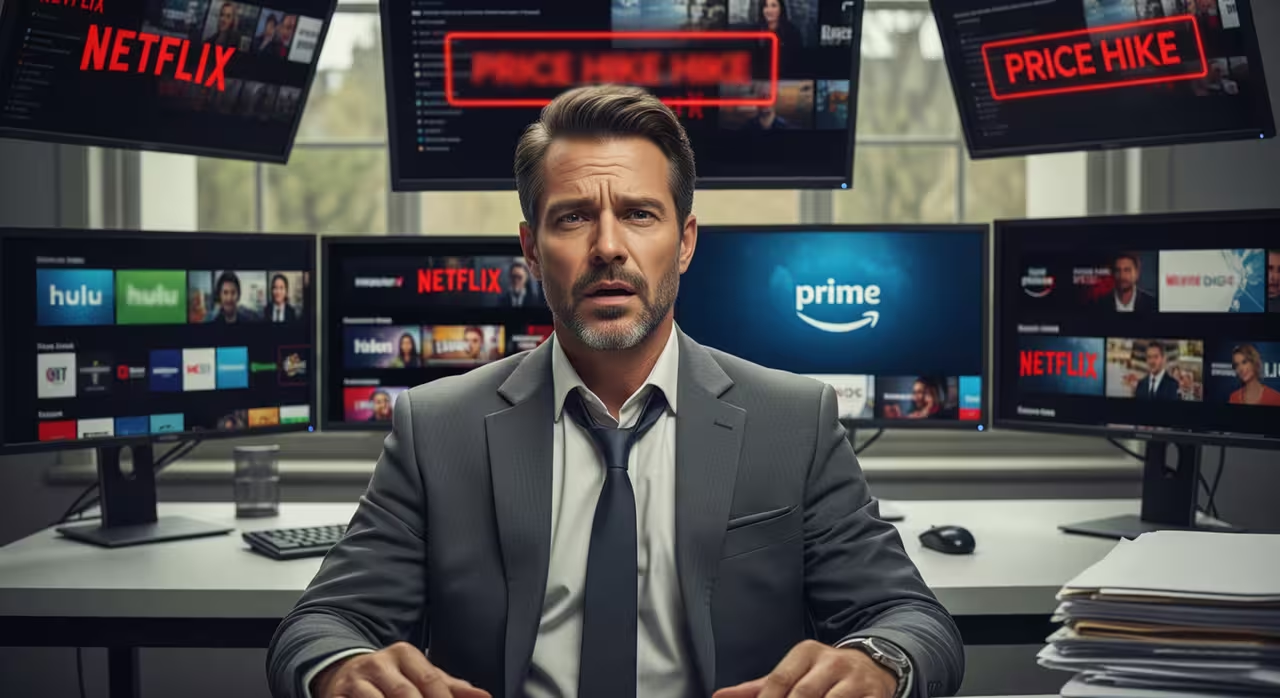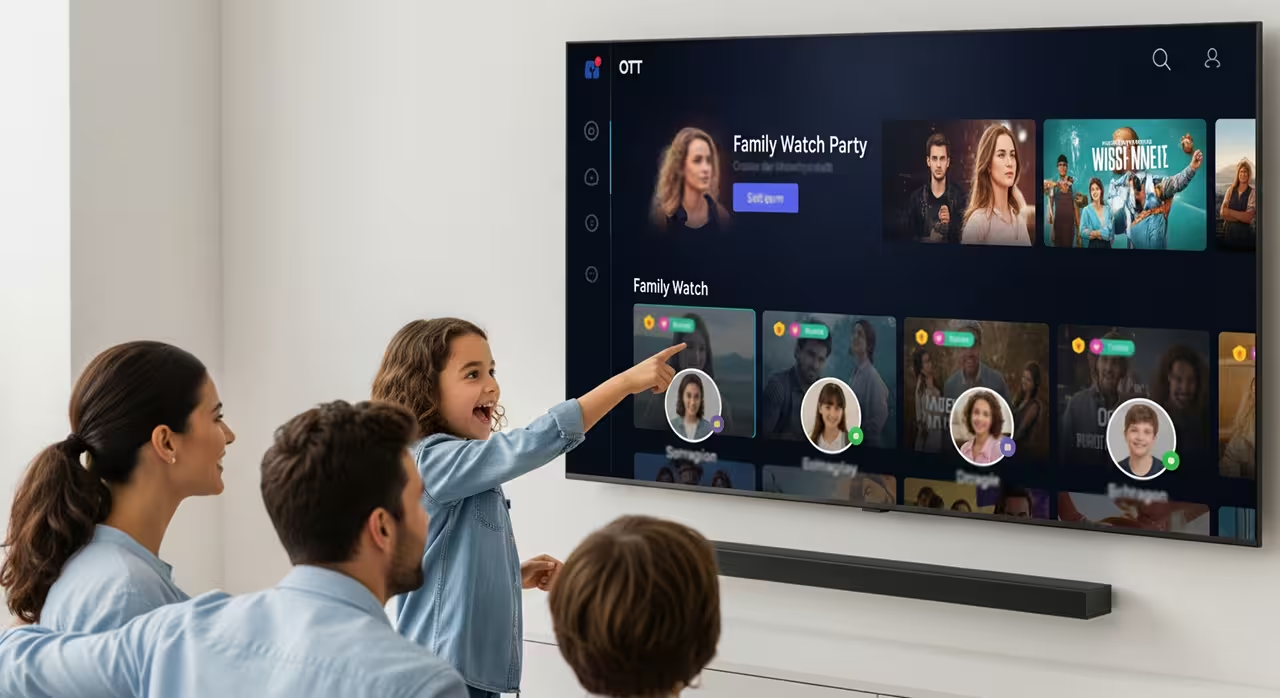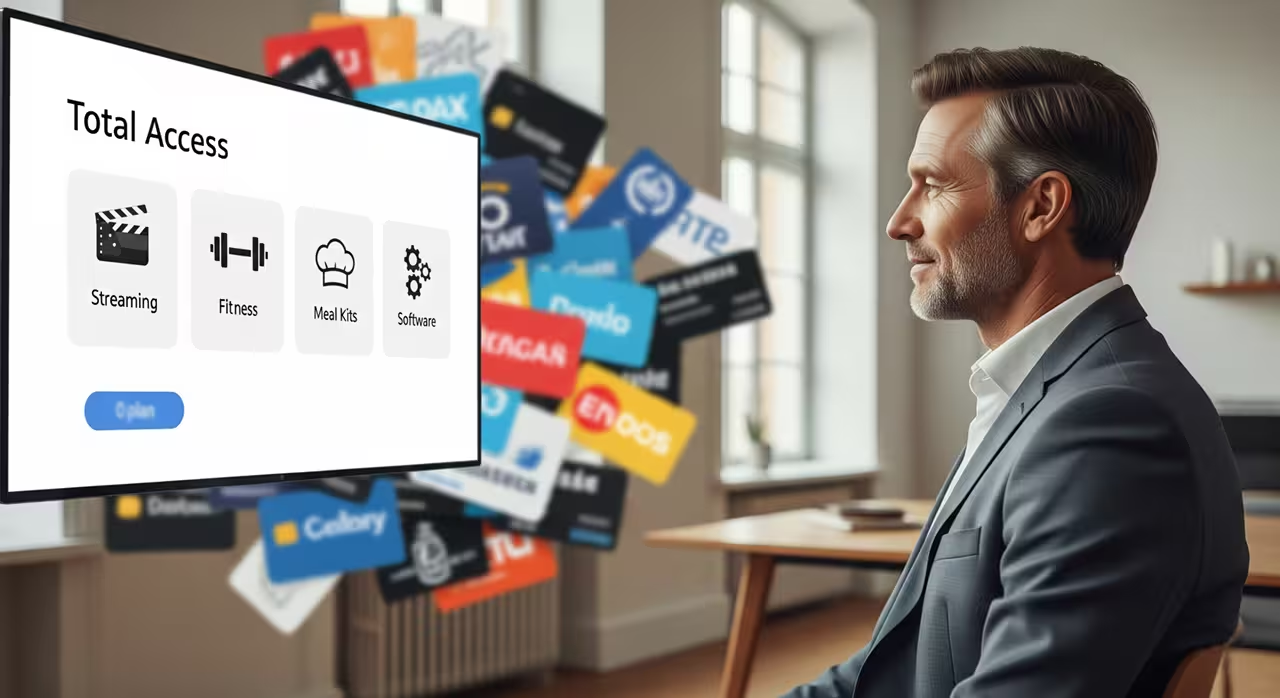
Bundling Streaming Services to Battle OTT Subscription Fatigue
Subscription fatigue is no longer just a buzzword. It represents a business risk. According to Kantar, the average U.S. household now juggles over four streaming subscriptions, with many reaching their limit. As prices rise and content sprawls, viewers are rethinking their OTT spending habits. For providers, this means rising subscriber churn and shrinking subscription revenue opportunities.
The solution? Bundled streaming services. As we move through 2025, bundling is no longer a niche experiment, it’s a central strategy in the OTT ecosystem. The bundle trend is gaining momentum as platforms seek to simplify access, drive retention, and offer users more value and savings. But bundling is only one part of a broader strategy to battle consumer fatigue in an increasingly saturated market
What is Subscription Fatigue?

Subscription fatigue refers to the frustration users experience when juggling multiple streaming services, each with its own app, billing cycle, and exclusive content. According to Deloitte’s Digital Media Trends 2025, 47% of U.S. consumers feel overwhelmed by the number of subscriptions they manage, with nearly one-third planning to cut at least one service.
Why This Matters
- Churn is expensive: Acquiring new users is 5–25x more costly than retaining existing ones.
- Viewer loyalty is declining: With exclusive content fragmented, users hop between platforms depending on current shows or deals.
- User ownership is shifting: Consumers now expect more control and ownership over what they pay for, seeking services that feel personalized, flexible, and worth the investment.
The Real Cost of Subscription Fatigue and Streaming Fatigue

Subscription fatigue leads to measurable churn. Simon-Kucher’s survey revealed that over a third of users canceled at least one streaming service after a price hike. Subscription costs is a top churn factor, followed closely by overwhelming content offerings. On the flip side, exclusive content, intuitive interfaces, and convenience drive subscriptions growth.
This ties directly to Deloitte’s earlier finding: 47% of users feel overwhelmed by the number of services leading to a significant decline in subscription renewals. The value proposition has become blurred. Users dissatisfaction is rising, they don’t just want more content, they want the right content, at the right price, on a manageable platform.
2024 Streaming Trends: Spending is Shrinking

In 2024, the average American spent 23% less on streaming compared to the previous year (TheWrap). This decline reflects deeper economic anxiety and changing consumer priorities.
The Inflation Squeeze
Subscriber fatigue is more than content overload. It’s a budgeting issue. With inflation continuing to squeeze household budgets, discretionary spending is under review. Forbes put it clearly: “Subscription fatigue isn’t just content overload, it’s a budgeting reality.” Streaming services, often seen as non-essential, are among the first to be cut.
The Rise of Bundled OTT Services: How to Bundle Streaming Services

In response, a growing number of OTT platforms and internet service providers are adopting bundled subscription business models that combine multiple services into a single, user-friendly offering.
Instead of managing Netflix, HBO Max, Disney+, Hulu, and local channels separately, users get everything under one umbrella with unified billing, shared content discovery, and smoother user experience.
Real-World Examples of Bundling Streaming Services
Verizon +Play (USA)
Verizon's +Play platform allows customers to manage and bundle subscriptions from Netflix, Disney+, Peloton, and more under one Verizon account. Users benefit from promotions and simplified control over their digital life.
TIMVision (Italy)
TIM, a major Italian telecom, bundles Netflix, DAZN, and other streaming services with broadband under TIMVision service. Subscribers receive a single bill and access to premium content via one set-top box or app.
Beyond Bundling: Retention in the Age of Subscription Fatigue
Before we consider going beyond bundling, let us see how bundling creates value for both the consumer and the operator.

For consumers:
- Fewer apps and logins
- Easier content discovery
- One bill instead of five
For operators:
- Reduced churn and higher customer retention
- Upselling and premium bundle opportunities
- Stronger market differentiation
While bundling is an effective retention strategy, it's only one of many tools available. Operators and content distributors have several other options to improve customer retention. Here’s just a few of them:
- Offer subscription pause options instead of forcing cancellation.
- Provide time-sensitive discounts to at-risk users.
- Introduce loyalty programs that reward consistent usage.
- Focus on the value equation: ensure that what users pay feels worth it.
- Simplify content discovery to reduce friction and frustration.
In the new OTT era, retaining subscribers will depend on innovative subscription strategies built around personalization and pricing flexibility.
The Role of Platforms Like UniqCast in Bundling Streaming Services

To make this strategy work, service providers need flexible technology that supports content aggregation, integration, and personalization. That’s where end-to-end platforms like UniqCast step in.
How UniqCast Enables Bundling
- Unified Service Integration: Seamlessly onboard third-party services (Netflix, local VOD, sports) via APIs.
- Single Sign-On & Billing: One login and invoice across all content bundles.
- Customizable Multiscreen UX: Let users browse, discover, and stream across STBs, mobile, web, and smart TVs - all in one interface.
- Personalized Recommendations: AI-driven engines suggest relevant content from all bundled services.
- Operator Control Panel: Manage pricing, user data, bundle configuration, and real-time analytics from one dashboard.
From Users to Communities: Driving Deeper Engagement to Retain OTT Subscribers

Combatting streaming fatigue also requires deeper engagement. Beyond bundling streaming services, platforms can:
- Create multi-profile support within households: Offering multi-profile support within households allows each member to personalize their viewing experience. This means individual profiles can be created for different users, each with their own watch history, recommendations, saved content, and parental control settings. This personalization reduces friction and enhances satisfaction, making the service more appealing to various family members and decreasing the likelihood of subscription fatigue as everyone feels their preferences are catered to.
- Gamify experiences with points, badges, or viewing streaks: To combat subscription fatigue, gamification can be a powerful tool for OTT providers. By integrating elements like points, badges, or viewing streaks, services can transform passive consumption into an engaging, interactive experience. This approach builds a sense of loyalty and community around the platform.
- Integrate social features like watch parties or content sharing: Integrating social features such as watch parties or content sharing can significantly enhance user engagement and combat subscription fatigue. By allowing users to watch content simultaneously with friends and family, or easily share their favorite shows and movies on social media, OTT platforms can create a sense of community and shared experience. This leverages word-of-mouth marketing, potentially attracting new subscribers through existing users' networks.
These community-driven tactics shift the dynamic from passive consumption to interactive entertainment.
Building a Subscription Relationship, Not Just a Transaction

The challenges facing OTT are part of a broader consumer trend shaped by content abundance and choice overload. Over 40% of retailers saw cancellations in their subscription-based services in 2023. The problem isn’t unique to entertainment subscription services; users are also growing tired of subscribing to fitness apps, meal kits, and SaaS platforms, indicating broader wave of subscription fatigue.
That’s why bundling is more than an OTT fix; it’s a universal strategy for creating sticky value across industries.
Strategic Implications for Battling Subscription Fatigue
Bundling is a strategic response to platform fragmentation, redefining how OTT services are packaged, discovered, and consumed. Operators that adopt this model gain a competitive edge by becoming content super-aggregators that the one-stop shop users turn to for entertainment.
Looking beyond bundling, OTT success will hinge less on acquisition and more on long-term retention. It’s not just about reducing churn, but creating services that feel indispensable.
Providers must transition from 'sign-up/churn' thinking to 'value/lifetime' thinking. This means refining the subscription model and service offerings, optimizing content discovery and streaming pricing, and ensuring each subscriber feels understood.
Looking Ahead
- Expect cross-industry content bundles, combining entertainment, fitness, e-learning, and even cloud gaming.
- Telcos and ISPs will increasingly evolve into digital media gateways, controlling access to a broader content universe.
Final Thoughts - Aggregate and Simplify

Subscription fatigue isn’t going away. But with the right bundling strategies, powered by smart platforms like UniqCast, OTT operators can turn a pain point into an opportunity.
By aggregating content, simplifying access, and boosting user value, bundling becomes not just a tool for subscriber retention, but also a means to redefine the OTT experience.




